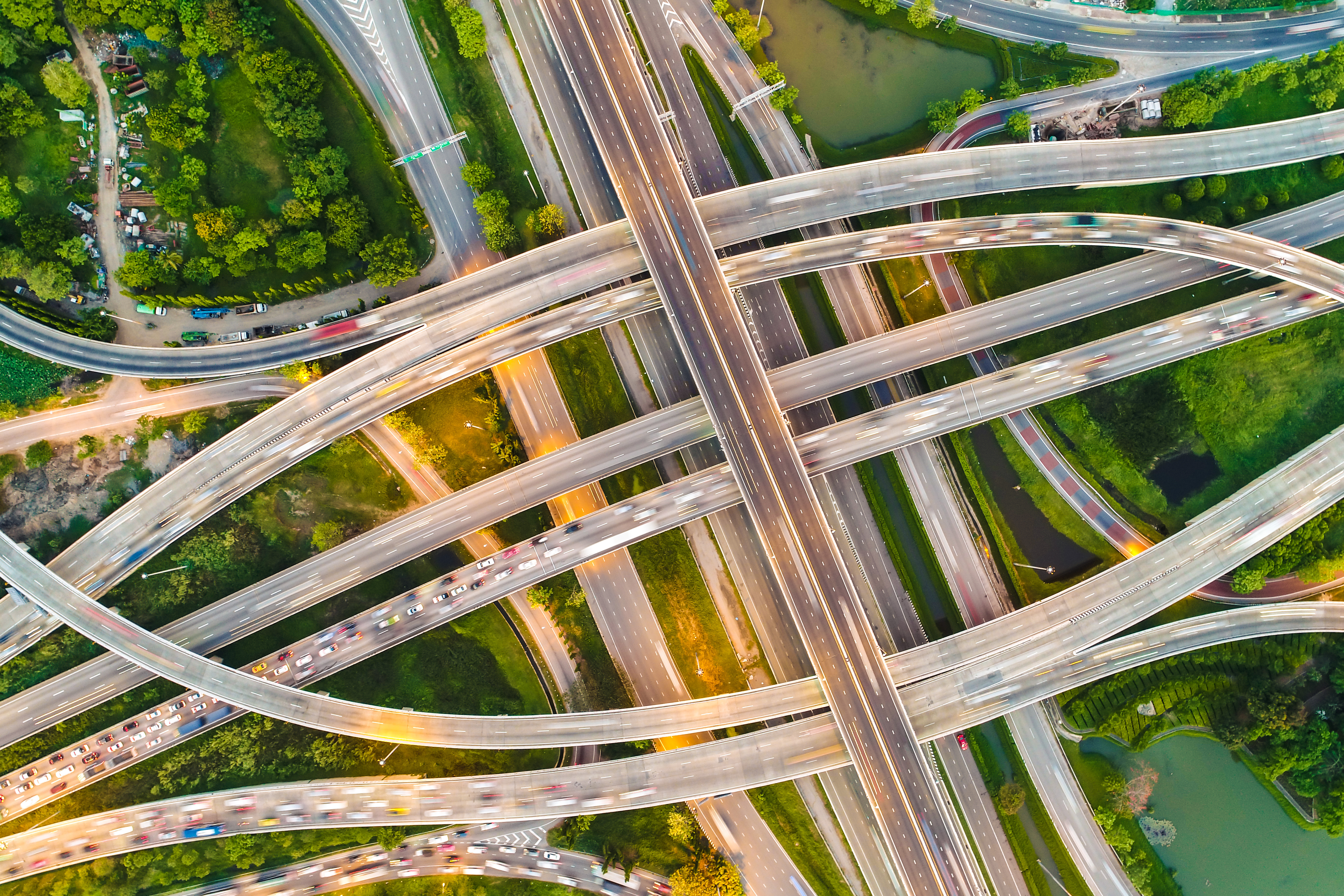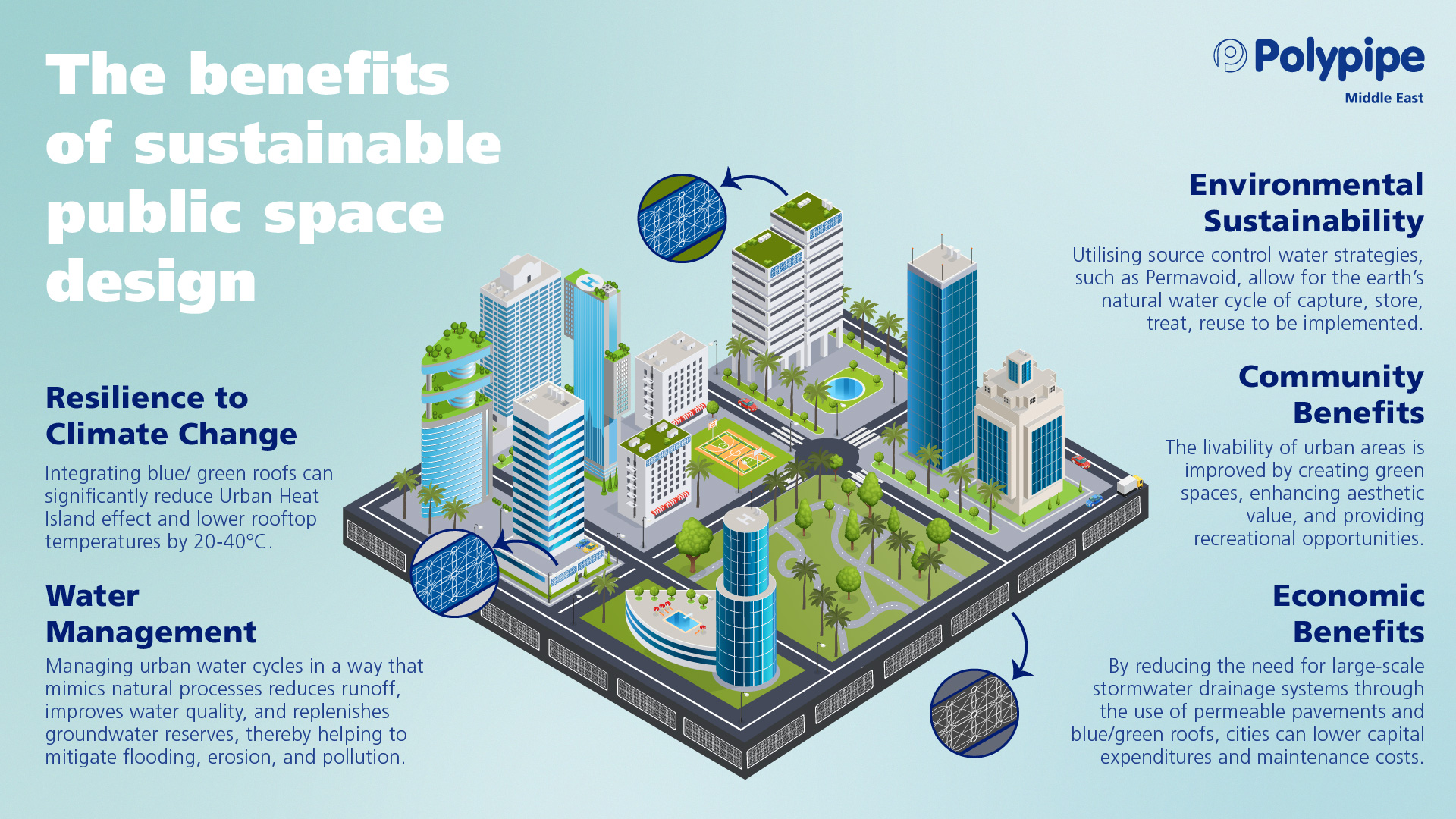Painting the Town Green: Why Bringing the Natural World Into Urban Spaces Matters
Wednesday 24th July 2024

Today, more people live, work and play in cities than ever before. In fact, it’s estimated that more than half of the world’s population – some 4.4 billion people – call these urban environments home.
And in the GCC, urbanisation is only set to expand. By 2050 the number of inhabitants across the region is predicted to rise by 50%, to incorporate an additional 22 million people. Of these, approximately nine in ten will live in urban areas, which will be significantly higher than the global average.
However, although city life brings many benefits, environments with limited exposure to green spaces can ultimately be detrimental to our physical and mental health. Living in a concrete jungle, devoid of access to greenery or beaches, where grass is replaced by glass and metal, has been proven to increase the risk of mental conditions such as anxiety and clinical depression, as well as a range of social issues.
So, how can the inclusion of more green spaces in urban environments support both personal and societal well-being? And how can the ‘greening’ process also help to support urban infrastructure, as well as the wider natural world? This Smart Irrigation Month, we’re diving in to explore the solutions at hand.
Why Do Green Spaces in Urban Places Matter?
People
As human beings, we are innately connected to the natural world – even if we have lived our whole lives in urban environments. And multiple studies have proved a direct correlation between a person’s overall well-being, and their exposure to green spaces. Easy access to greenery can reduce rates of depression and anxiety, as well as lowering stress and cortisol levels. Time spent in nature can also improve a person’s cognitive function and memory, as well as improve an individual’s relationship with stressful life events.
Although we now have the scientific backing to prove it, the benefits of access to natural environments have been acknowledged for centuries. The Japanese practice of ‘shinrin-yoku’ (‘forest bathing’) is an ancient custom that, in recent years, has gained worldwide popularity for its uplifting properties. Its health benefits include improved immune system function and reduced blood pressure. Another popular practice is ‘earthing’ – or ‘grounding’ – where a person leverages the earth’s natural electric charge to balance negative and positive ions in their body. This is achieved through a physical connection with the earth, such as walking barefoot on grass or sand, swimming, or practising gardening. This is another concept that has been advocated for centuries by various cultures around the world, and is now gaining traction within the scientific community for its physical and mental benefits.
In addition to individual well-being, access to green spaces can also benefit entire neighbourhoods. Studies have proven the link between green spaces and lower violent and property crime risks in neighbourhoods across the US, helping to build stronger, safer communities.
Planet
Just as green spaces in urban environments are essential for a person’s mental and physical health, they are also crucial for the well-being of our wider world. As cities grow and expand into previously rural spaces they often consume natural areas, resulting in the loss of critical habitats and ecosystems. Preserving and expanding these spaces within urban environments – and also provisioning for green spaces – becomes increasingly important not only for human health, but also for maintaining the ecological balance and resilience of our natural world.
How Can We Improve Access to Urban Green Spaces?
So, how can we best leverage green urbanism to improve the presence of – and access to – green spaces in our cities? How can we overcome the challenge of hot, arid desert climates, to enhance the well-being of their inhabitants, while also promoting sustainable practices?
Urban communities must be designed to live in balance with the local climate and environment, whether quite wet or very dry. And, thanks to the evolution of smart water management systems, there are several solutions.
Traditionally, urban developments have relied on ‘grey’ infrastructure – which uses systems of gutters and pipes to transport stormwater into treatment plants and local waterways – to manage wastewater and stormwater. However, critics of grey infrastructure have long argued that its use is detrimental to both public health and the environment. And now, the recent storms witnessed across the region also prove that grey infrastructure can no longer support the impact of intense downpours when they do occur – no matter how infrequently.
However, this is where green infrastructure – such as Sustainable urban Drainage Systems (SuDS) – can make a real difference, while promoting the presence of green spaces within our cities.
SuDS are a range of sustainable water management solutions that work by mimicking natural water systems to manage rainfall and runoff in urban areas to enforce resilience, whilst supporting biophilic design principles to create greener, healthier cities. And, when it comes to greening desert cities, one perfect example of SuDS in practice is green roofs.
A green – or blue – roof is a roof surface partially or completely covered with a lightweight growing medium and plants, planted over a waterproofing system that can capture, store, treat and reuse water.
In a region where both severe water shortages and extreme storm events occur, green roofs can support infrastructure and keep the population safe. They retain anywhere between 70-90% of stormwater, providing sustainable and efficient water management that can reduce the risk of flooding.
Another core benefit of green roofs is the reduction of greenhouse gases. Plants play an important role in removing air pollution and thus reducing greenhouse emissions. These greenhouse gas emissions can also create warm ‘microclimates’ – which, compounded with an ‘Urban Heat Island’ (UHI) effect from excess paving and concrete in cityscapes – can drive up temperatures and increase energy demands. By absorbing excess CO2 and expelling oxygen, the plants used in green roofs can reduce greenhouse gas emissions and reduce AC demands by up to 75%, to promote a more comfortable and sustainable living environment.
Polypipe Middle East’s Permavoid is an award-winning geocellular water management solution that provides a shallow drainage system in urban settings, particularly for blue/green roofs. It allows the designer to adopt a ‘source control’ water strategy – capture, store, treat and re-use – rather than a traditional linear wastewater system where water is treated as a waste product. The Permavoid system irrigates from below – creating natural irrigation without using pumps, hoses or energy. Just like nature. This reduces the demand for water for irrigation by up to 40% when compared to over-soil irrigation systems where water is lost to evapotranspiration.
By integrating advanced irrigation technologies like Permavoid, cities can also leverage innovative solutions to promote both urban farming and greater biodiversity. Providing residents with fresh, healthy produce from urban gardens via smart SuDS irrigation systems – such as our Permavoid system – not only promotes healthier local produce, but also reduces the carbon footprint from lengthy and expensive food imports. These urban farms and gardens can also boost the bee population, which is responsible for about one-third of global food production. Safe zones such as blue/green roofs and podium decks help to sustain local bee populations, preserve the natural balance and keep the food cycle moving.
But of course, one of the biggest benefits of green infrastructure is access to biodiverse environments for a city’s occupants. By providing access to lush, green spaces, where both flora and fauna can thrive, developers can support the holistic health and well-being of people and the planet we share through smart design.
To learn more about how our smart and innovative water management systems can promote greener, cleaner and healthier living environments, contact us today.
Tel: +971 (0) 4 518 3000
Email: middleeast@polypipe.com

